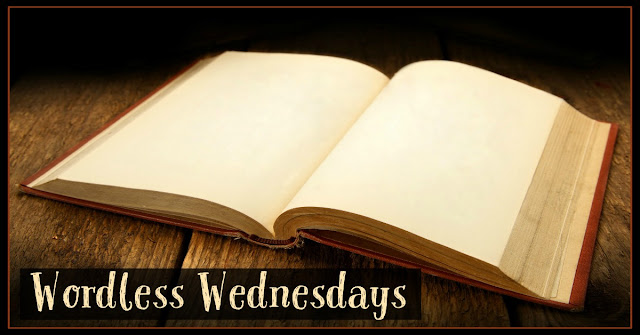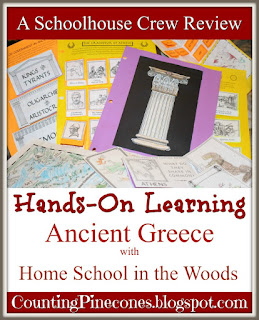Another week in the history books, which means it's time for the weekly wrapup.
| Linking Up With... |
Last week went well, but we did get a bit behind. I did not schedule in for the holiday on Monday, thinking that both my husband and my oldest daughter would sleep in anyway and I would have most of school done before they got up. Of course, nothing ever occurs the way one plans and they were both up early and my husband decided we would head to town to do grocery shopping and go out to eat.
 We did, however, get some work done before we headed out, opting to knock out our math and grammar lessons out before walking out the door. However, since we didn't get to certain materials, I opted to defer those lessons til next week so that we weren't trying to play catch up and over whelm the kiddos.
We did, however, get some work done before we headed out, opting to knock out our math and grammar lessons out before walking out the door. However, since we didn't get to certain materials, I opted to defer those lessons til next week so that we weren't trying to play catch up and over whelm the kiddos.This week, our drill pages added a review for fractions, which we've only briefly covered but I am thrilled to say the kids had no problem recalling the information. I did decide to take it one step further and show them now to reduce fractions to get them use to the process.
While we haven't formally covered multiplication or division, we have used "Time Tales" for a review last year and I am completely amazed how much the kids have retained from that. We'll formally be starting these skills in our math book in a few weeks but they already have a head start and a pretty good grasp on what's going on, so I am thinking it won't be quite the challenge as it was for me when I was in school. At least, that's what I'm hoping.. haha
 Our grammar lessons continue to be Daily Grammar from Schoolhouseteachers.com and Eclectic Foundations Level B. This week, we began talking about Verbs, which honestly, is review material for us but I went ahead and continued with the lesson. We also began talking about subject and predicate and the kids had to start diagramming their sentences showing both, as well as their verb. Also included in this lesson was the "state of being verbs", which I hadn't taught before. This made me very glad I went ahead and taught the verb lesson. The kids are troopers and they pick up new information very well.
Our grammar lessons continue to be Daily Grammar from Schoolhouseteachers.com and Eclectic Foundations Level B. This week, we began talking about Verbs, which honestly, is review material for us but I went ahead and continued with the lesson. We also began talking about subject and predicate and the kids had to start diagramming their sentences showing both, as well as their verb. Also included in this lesson was the "state of being verbs", which I hadn't taught before. This made me very glad I went ahead and taught the verb lesson. The kids are troopers and they pick up new information very well. With the Eclectic Foundations Level B, we worked on reading and pronouncing words that end in "es" as well as possessive nouns. We also worked to rearrange words in a sentence to alternate between a declarative sentence and a question. (ei: The water is safe. Is the water safe?) For our cursive practice, the kids worked on the letters M through P. I said it last time but I got to say it again, I am so impressed with how their cursive writing is coming along using this program. (Which I will talk about in great depth when I write my review next month). I've seen such an improvement in both Ashleigh and Garrett's writing samples. Especially Garrett. He tends to write very sloppy (I don't know if this is a boy thing or if it's an autistic thing) and seeing how legible his handwriting is becoming is amazing to me. I also had to laugh as earlier in the week, I was bragging about their writing and a friend of mine commented about how cursive is suppose to be our generation's secret language. While it's quickly becoming a lost art - my kids won't be left behind. LOL
For math this week, we reviewed Column Addition and Adding Large Numbers. This is something they are both very good at, so basically, it was a cushy math week for them ;)
We did hold off for most of our history this week. We opted to wait til next week to continue with our unit study on Equador and the Waodani people since our scheduling was off, however, we did sit down as a family and watch the movie "End of the Spear" which was about Nate Saint and his son Steve and their lives (and death) with the Waodani people. I was fortunate to find this movie on Pureflix streaming service, along with a short 30 minute documentary by Elizabeth Elliott titled "Through Gates of Splendor". We also found " Beyond the Gates of Splendor", a documentary produced by Steve Saint, on Netflix which we watched as well. We will continue with the "Walking with the Waodani" unit study next week.
Since our American history text is broken into short bits, we went ahead and included it with this week. This week's discussion was in regards to the Lost Colony of Roanoke, the settlement of Jamestown, and Pocahontas and John Smith. Pocahontas is always a fun topic in our house as a few years ago while researching my husband's family tree, we found that he and the kids are direct descendants of the Indian Princess.
Once again, Science reigned ruler in this week's classroom. I've mentioned before, we are using "Exploring Life Science" by Chrissy Martin as our text. I didn't think about the fact that this particular text is written for upper elementary students and I'm glad I didn't. These kids are eating up the information presented and learning so much.
This week, we tackled fungi, bacteria and viruses. Some of the activities we did this week were making a spore print from a mushroom (which we looked at under the microscope), dissecting a mushroom, observing how yeast works, observing bread mold and observing bacteria both from our petri dishes as well as from yogurt.
 |
| Prepared penicillin slide |
 |
| Hard to grow mold in the desert |
 |
| Bread mold under the microscope |
 |
| Bread Yeast culture |
Last week, we poured agar for petri dishes and then took swabs of a few things around the house, as well as a sample from the kids unwashed and washed hands. For the last week, the petri dishes have been hiding out in a dark cabinet. On Thursday, we brought the petri dishes back out and observed the growth. Our control dish showed little to no growth while Ashleigh's hand samples came back absolutely nasty, including her washed hands. This gave us a very good lesson on why it is very important to use proper hand washing techniques with soap.
 |
| Sample from Door Knob |
 |
| Samples from Roku Remove and PS4 Controller |
Our final school work included an art lesson using Creating a Masterpiece. This is a review item for us. Dad has been switched to day shift for the next few weeks, so for this weeks assignment, Dad joined in on the fun. We opted this week to play around with water colors (we've previously done oil pastel lessons and wanted to change it up a bit).
Here is our final "masterpieces".. Personally, I love Ashleigh's work - her flowers remind me of Hawaii and Hibiscus flowers ;)
 |
| Top: Alyssa and Charles Bottom: Mine and Ashleigh |
Once again, we had a great week, even if a small hiccup in the planning due to the holiday.





















































